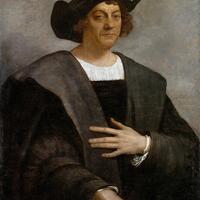More about United States Capitol

Sr. Contributor
The history of the U.S. Capitol is like an HGTV reality show where the homeowners spend your money to keep renovating their place.
The Capitol was supposed to be the crowning achievement of Pierre Charles L'Enfant, the person designing the capital's layout. Only he just wouldn't pull the trigger. The Founding Fathers begged for a physical plan to approve while L'Enfant bided for more and more time claiming the idea just needed to cook a little more in the old noodle. George Washington straight up fired him and team Founding Fathers picked a design from physician William Thornton who took up the project as a hobby.
Between construction and constant renovation, the people of these United States have so far spent $133 million to keep up the place where our Senate and House of Representatives meet to bicker and get nothing done. And that figure doesn't even account for inflation, so you may as well add a zero to get a more realistic idea for the cost to taxpayers. It's not like the renovations are all unnecessary, though. For instance, there was a major overhaul of the entire structure just after its first completion when the British stormed into Washington DC and set fire to the Capitol and every other important public building. The damage was immense, but not total thanks to DC's fine tradition of crappy weather.
The show stopping dome we see today is a replacement. The rough draft was a wood version covered in copper. A couple decades and several renovations enlarging the Capitol left every politician in Washington circa the 1850s agreeing that the dome looked laughably out of place, small in comparison to the rest of the building. The nation was suddenly in the market for a dome job when plans for a new take on the idea by architect Thomas Walter based on Michelangelo's dome for Saint Peter's Basilica caught everyone's collective eye. Walter was already doing work on the wings of the building, so both houses of Congress and President Franklin Pierce moved quickly to add a new dome to the workload. Construction was hampered by the Civil War, but Abraham Lincoln insisted work on the dome continue to show everyone, north and south, that the USA can't stop won't stop.
The cake topper adorning the tippy-top of the dome is an allegory of freedom, represented by a dour looking woman with a sick hat. She was originally to wear a liberty cap (a hat worn by free men in ancient Greece and Rome similar to what the mice in Disney's Cinderella cartoon and the Smurfs wear on their noggin), but Secretary of War and future President of the Confederacy Jefferson Davis wasn't down with freedom for slaves. Boo hiss, Davis. So, to appease that one squeaky, hateful wheel, the powers that be quashed the liberty cap idea, opting rather for a Roman centurion's helmet.
Featured Content
Here is what Wikipedia says about United States Capitol
The United States Capitol, often called the Capitol or the Capitol Building, is the seat of the United States Congress, the legislative branch of the federal government. It is located on Capitol Hill at the eastern end of the National Mall in Washington, D.C. Although no longer at the geographic center of the national capital, the U.S. Capitol forms the origin point for the street-numbering system of the district as well as its four quadrants. Like the principal buildings of the executive and judicial branches, the Capitol is built in a neoclassical style and has a white exterior.
Central sections of the present building were completed in 1800, when the 6th U.S. Congress convened there on November 17, 1800, moving the national capital from Philadelphia to Washington, D.C.. The building was partly destroyed in the 1814 Burning of Washington by the British, then was fully restored within five years. The building was enlarged during the 19th century, by extending the wings for the chambers for the bicameral legislature as more states were admitted to the union, with the House of Representatives housed in the south wing and the Senate housed in the north wing. The massive dome was completed around 1866 just after the American Civil War. The east front portico was extended in 1958. The building's Visitors Center was opened in the early 21st century.
Both its east and west elevations are formally referred to as fronts, although only the east front was intended for the reception of visitors and dignitaries, while the west front is now used for presidential inauguration ceremonies. The building and grounds are overseen by the architect of the Capitol, who also oversees the surrounding Capitol Complex.
Check out the full Wikipedia article about United States Capitol
















